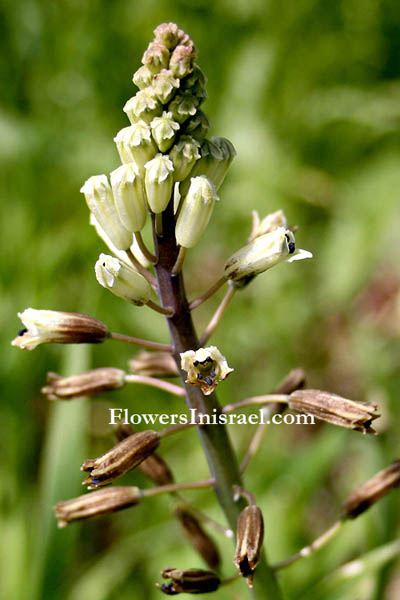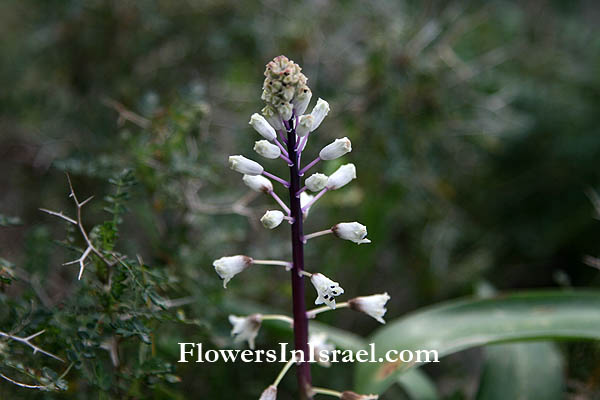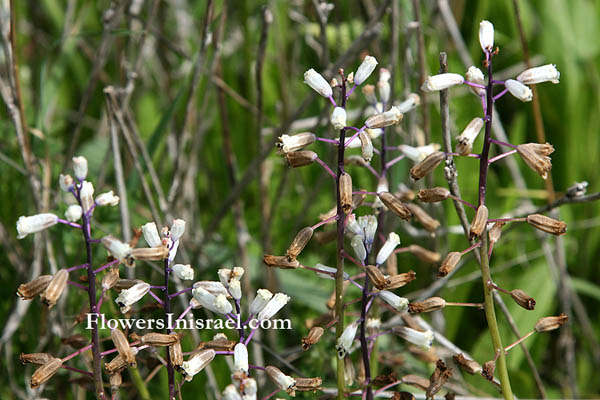Hebrew: זמזומית מצויה, Arabic: البلفية المتعرجة
| Scientific name: | Bellevalia flexuosa Boiss. | |
| Common name: | Common Roman Squill | |
| Hebrew name: | זמזומית מצויה | |
| Arabic name: | البلفية المتعرجة | |
| Family: | Liliaceae, שושניים |

|
| Life form: | Geophyte | |
| Stems: | 12-23 cm high; pink, violet color of the stem and pedicels | |
| Leaves: | Rosette, usually prostate and wavy, with rough or shortly ciliate margins | |
| Flowers: | Raceme; flower-buds white; becoming greenish brown | |
| Fruits / pods: | Capsule, obtuse at apex; seeds rounded or occasionally pear-shaped, smooth, dull, black, but sometimes with a bluish bloom | |
| Flowering Period: | February, March | |
| Habitat: | Batha, Phrygana | |
| Distribution: | Mediterranean Woodlands and Shrublands, Semi-steppe shrublands, Deserts and extreme deserts, Montane vegetation of Mt. Hermon | |
| Chorotype: | Mediterranean | |
| Summer shedding: | Ephemeral |

Derivation of the botanical name: Bellevalia, named in honor of Pierre Richer de Belleval (1564-1632), who founded the Montpellier Botanic Garden in 1593. flexuosus, flexuos, full of turns, winding, tortuous; bending, curvy. The Hebrew name: זמזומית, zimzumit, it's origin is in the buzzing, humming (זמזום, zimzum), that the flowers make when they are slightly crushed by hand.


|